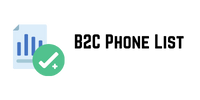Generating high-quality leads is the lifeblood of any successful business. But is there a “best” time to capture those potential customers? While many factors influence lead generation, leveraging data can provide invaluable insights, helping you optimize your efforts and boost your conversion rates. Gone are the days of arbitrary outreach; a data-driven approach reveals the optimal moments to connect with your audience.
Understanding Your Audience’s Digital Habits
The first step in pinpointing the best time to generate leads is understanding your target audience’s online behavior. This isn’t a one-size-fits-all phone number data answer. B2B prospects often have different digital habits than B2C consumers, and even within those categories, demographics and industries play a significant role.
Website Analytics: Unveiling Peak Activity
Your website analytics are a goldmine of information. Tools like Google Analytics can show you exactly when visitors are most active on your site. Look for trends in:
Peak Traffic Hours: Identify the days of the week and specific hours when your website receives the most traffic. This often correlates with when your audience is most engaged and receptive.
Bounce Rate & Time on Page: High traffic is great, but combine it with a low bounce rate and longer time on page. This indicates genuine interest, suggesting these are prime times for lead capture forms or live chat interactions.
Conversion Paths: Analyze the typical journey of a converting lead. Are they visiting specific pages at certain times before converting?
Email Marketing: Timing Your Outreach for Maximum Impact
Email remains a powerful lead generation bron contact center tags call center tool, but timing is crucial. Sending emails when your audience is most likely to open and engage significantly impacts your success.
A/B Testing: Your Key to Email Optimization
Don’t guess; test! A/B testing different send times and days is essential. While general studies suggest Tuesday, Wednesday, and Thursday mornings often yield the best results for email open rates, your specific audience might defy these norms. Consider:
Industry Standards: Some industries have established norms for email communication. Research what works best in your niche.
Audience Time Zones: If your audience is geographically diverse, segment your email lists by time zone to ensure your emails arrive at an cuba business directory optimal local time.
Content Type: The nature of your email content can also influence optimal send times. A quick promotional offer might perform well during a lunch break, while an in-depth whitepaper might be better received in the morning.
Social Media: Engaging When Your Audience is Active
Social media platforms are dynamic environments, and the best time to post for lead generation varies widely depending on the platform and your audience.
Platform-Specific Insights
LinkedIn: For B2B leads, mid-week, during business hours (Tues-Thurs, 9 AM – 3 PM) often sees the most engagement. Professionals are typically checking LinkedIn during their workday.
Facebook & Instagram: For B2C, evenings and weekends often show higher engagement as people scroll during leisure time. However, this can vary greatly by demographic.
Twitter: Due to its fast-paced nature, consistent posting throughout the day is often effective, but peak times can still exist, particularly during news cycles relevant to your industry.
Utilize Native Analytics and Third-Party Tools
Most social media platforms offer built-in analytics that show when your followers are most active. Additionally, third-party social media management tools often provide more in-depth insights and scheduling capabilities to hit those optimal times.
Beyond the Clock: Contextual Timing and Behavioral Triggers
While time of day and day of week are important, consider other contextual factors and behavioral triggers for lead generation.
Event-Driven Lead Generation
Webinars & Online Events: Promoting and hosting these during typical business hours often works well for B2B audiences.
Seasonal Campaigns: Aligning your lead generation efforts with holidays, industry events, or seasonal trends can create urgency and relevance.
Behavioral Triggers: Real-Time Lead Capture
Exit-Intent Pop-ups: Capturing leads as they are about to leave your website can be highly effective.
Chatbot Engagement: Proactively engaging visitors with chatbots when they spend a significant amount of time on a particular product or service page.
Content Upgrades: Offering valuable resources (e.g., e-books, templates) within blog posts or articles when a reader is highly engaged with relevant content.
The Continuous Optimization Cycle
Identifying the “best” time to generate leads isn’t a one-time task. It’s an ongoing process of analysis, experimentation, and refinement. Continuously monitor your data, A/B test different approaches, and adapt your strategies based on the evolving behavior of your target audience. By embracing a data-driven approach, you’ll not only uncover the optimal times to connect with potential customers but also build a more efficient and effective lead generation machine.
